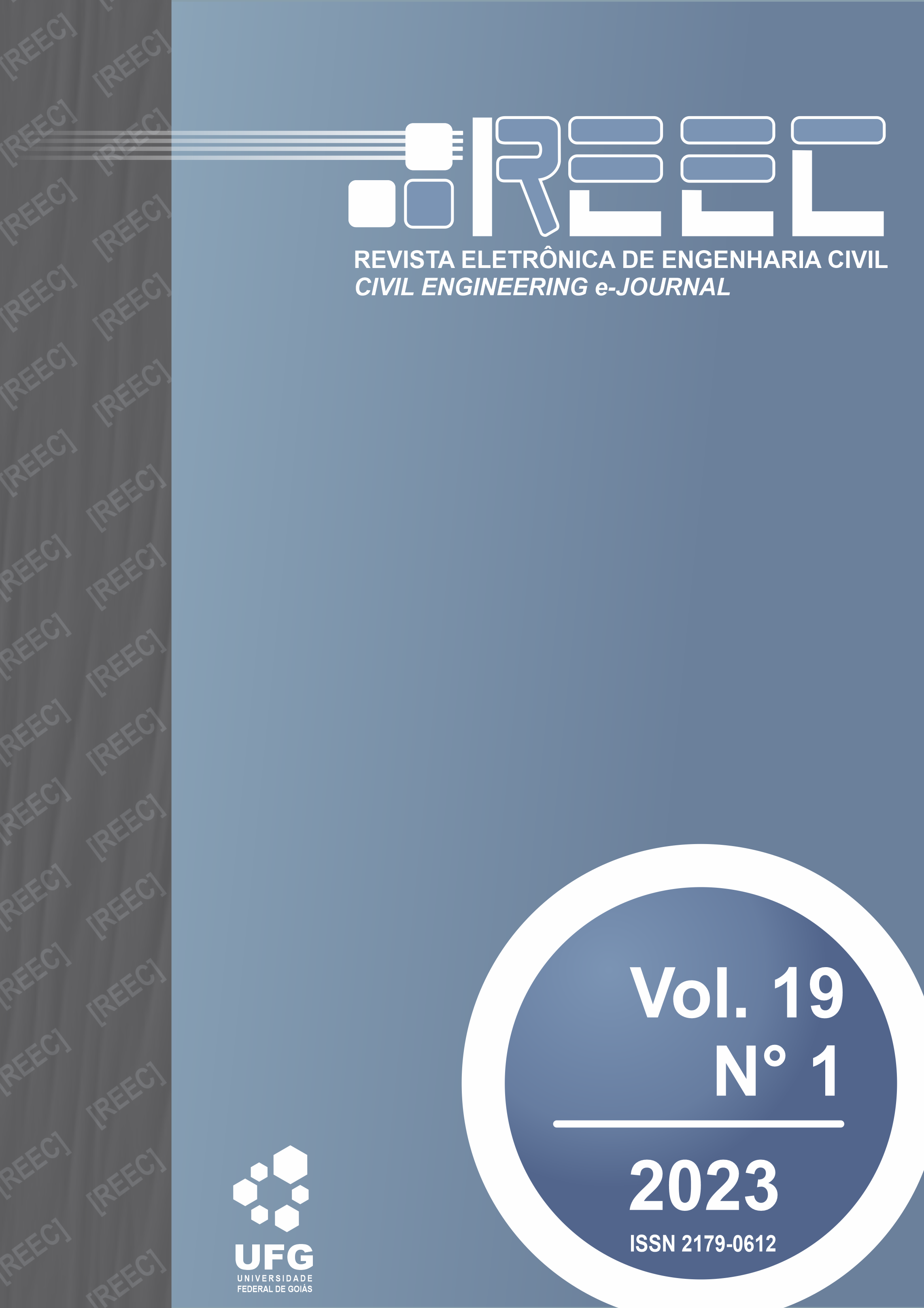Prospective Study of Technologies for Detection of Leaks in Water Supply Networks
DOI:
https://doi.org/10.5216/reec.v19i1.68225Keywords:
Leak detection, Water losses, Technological prospectingAbstract
ABSTRACT: Recent crisis scenarios in water supply systems in Brazil have reinforced the discussions on more efficient management of water resources, from capture to end use. In this context, losses reductions in water distribution systems are of vital importance with direct impact on resource availability for users and revenue generation for service providers. The objective of this work is to carry out a technological prospection for leak detection solutions in water supply networks. Through bibliographical and patent research, it was sought to gather useful information to present the technological panorama, both nationally and internationally. The collected data were submitted to quantitative and qualitative analyzes directed to the temporal evolution of publications and deposits, information about depositors or authors and the type of technological solution proposed. The survey revealed that domestic and foreign companies operating in the Brazilian market do not prioritize the protection of their technologies. Results with tools from international databases have revealed substantial and increasing numbers of patent deposits focusing on measurement technologies carried out by large companies based in Japan. Scientific publications on the subject have also demonstrated a substantial and growing number of articles originated in large part by institutions from China and the United States to America, related to Engineering and Environmental Science areas.
Downloads
References
ALVARES, F. APARELHO PARA GESTÃO DE CONSUMO DE ÁGUA , GÁS E ENERGIA ELÉTRICA POR MEIO DE SMART METERS. 21 de set. 2015. Disponível em: . Acesso em: 7 mar. 2021
ANA. CONJUNTURA DOS RECURSOS HÍDRICOS NO BRASIL: INFORME 2014. BRASÍLIA: AGÊNCIA NACIONAL DE ÁGUAS, 2015. Disponível em: <https://www.snirh.gov.br/portal/centrais-de-conteudos/conjuntura-dos-recursos-hidricos/informes2014.pdf >. Acesso em: 14 fev. 2021.
BRASIL. LEI No 14.026, DE 15 DE JULHO DE 2020. 15 jul. 2020.
CORRÊA, J. B. D. GEOFONE ELETRÔNICO. 24 ago. 1981. Disponível em: . Acesso em: 27 fev. 2021
ETZEL, C. A. C. SISTEMA DE MONITORAMENTO E DETECÇÃO DE VAZAMENTOS DE LÍQUIDOS - SENSOR VIRTUAL, 15 set. 2005. Disponível em: . Acesso em: 27 fev. 2021
DINIZ, I. S.; MARAFÃO, F. P.; GONÇALVES, F. A. S.; MONTEIRO, L. N.; YAMASAKI, F. Y.; VENDEMIATTI, C. MÉTODO DE MONITORAMENTO E/OU GERENCIAMENTO DE SISTEMAS DE DISTRIBUIÇÃO DE FLUÍDOS, SISTEMA DE DISTRIBUIÇÃO DE FLUÍDOS QUE UTILIZA TAL MÉTODO E USO DO MÉTODO DE GERENCIAMENTO. 29 jan. 2019. Disponível em: < https://repositorio.unesp.br/handle/11449/205032 >. Acesso em: 07 mar. 2021
IOCKHECK, M. MÓDULO PARA TESTE DE ESTANQUEIDADE. 3 out. 2002. Disponível em: . Acesso em: 14 fev. 2021
LAMBERT, A.; HIRNER, W. LOSSES FROM WATER SUPPLY SYSTEMS: STANDARD TERMINOLOGY AND RECOMMENDED PERFORMANCE MEASURES THE BLUE PAGES. IRC - International Water and Sanitation Centre. IWA - International Water Association. London – UK. Out. 2000. Disponível em: . Acesso em: 14 fev. 2021
OLIVEIRA, G., MARCATO, F. S.; SCAZUFCA P.; MARGULIES, B. N. PERDAS DE ÁGUA 2020 (SNIS 2018): DESAFIOS PARA DISPONIBILIDADE HÍDRICA E AVANÇO DA EFICIÊNCIA DO SANEAMENTO BÁSICO. Instituto Trata Brasil, junho 2020. Disponível em: <https://tratabrasil.org.br/wp-content/uploads/2022/09/Relatorio_Final_-_Estudo_de_Perdas_2020_-_JUNHO_2020.pdf> . Acesso em: 14 fev. 2021.
PADOVESE, L. R.; MIKI, M. K.; ARNESEN, A. S. SISTEMA DIGITAL DE PESQUISA DE VAZAMENTO. 8 ago. 2014. Disponível em: <http://inpi.gov.br>. Acesso em: 4 mar. 2021
REVERTE, C. F.; THAYER, S. M.; WHITTAKER, W.; CLOSE, E. C.; SLIFKO, A.; HUDSON, E.; VALLAPUZHA, S. AUTONOMOUS INSPECTOR MOBILE PLATFORM. 28 dez. 2006. Disponível em: <https://patents.google.com/patent/WO2006078873A3>. Acesso em: 14 fev. 2021.
Downloads
Published
How to Cite
Issue
Section
License
Autores que publicam nesta revista concordam com os seguintes termos: Autores mantém os direitos autorais e concedem à revista o direito de primeira publicação, com o trabalho simultaneamente licenciado sob a Licença Creative Commons Attribution que permite o compartilhamento do trabalho com reconhecimento da autoria e publicação inicial nesta revista.
![[REEC] Revista Eletrônica de Engenharia Civil](https://revistas.ufg.br/public/journals/30/pageHeaderLogoImage_pt_BR.png)



